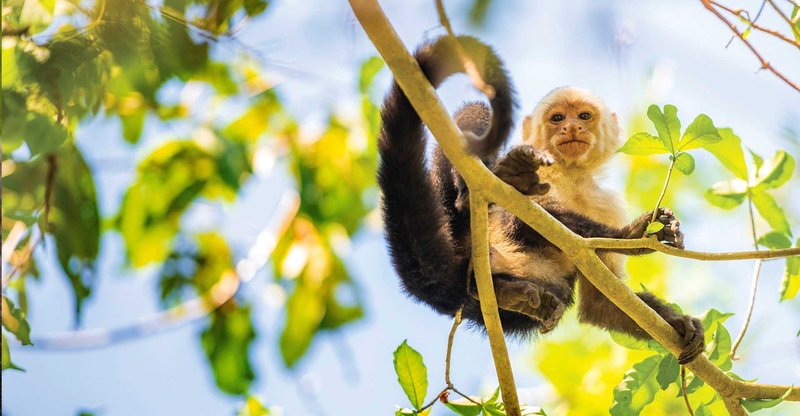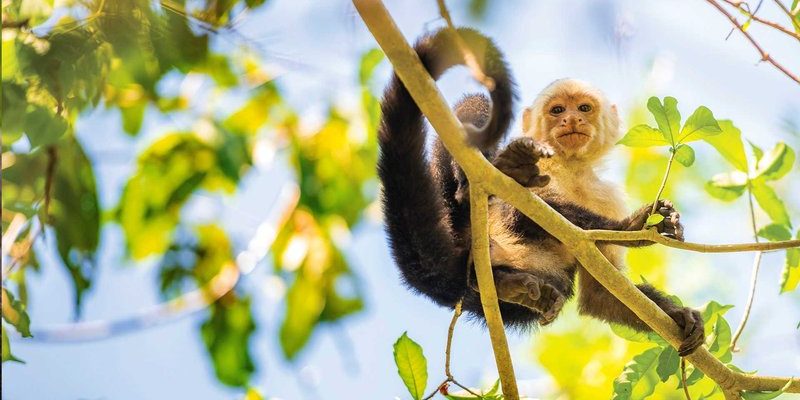
Capuchin monkeys are small yet curious primates found in Central and South America. They’re easily recognizable by their distinctive coloration and expressive faces. While they might seem harmless and even adorable, encountering one in the wild comes with its own set of protocols. After all, you wouldn’t want to accidentally invite trouble by getting too close or acting inappropriately. So, let’s dive into what you should do if you find yourself face-to-face with one of these feisty little monkeys.
Understanding Capuchin Behavior
Before making any moves, it’s helpful to understand how capuchin monkeys behave. These monkeys are highly social animals that live in groups, often called troops. They communicate with one another through a variety of vocalizations, facial expressions, and body language. If you encounter a capuchin in the wild, it’s crucial to read the situation.
You might notice them grooming each other or playing. This behavior is all part of their daily social life. The moment you step into their space, you could disrupt their natural routine. It’s like crashing a party uninvited—you might get some unusual looks, and you certainly don’t want to be the center of unwanted attention.
If you see a capuchin monkey approaching you, observe their body language. Are they relaxed, or do they appear agitated? Here’s a simple guide to help you understand:
- Relaxed Body Language: If they’re grooming or playing, it’s a good sign they’re comfortable.
- Aggressive Posture: If they puff up, bare their teeth, or screech, it’s time to back off.
Keep Your Distance
Now that you have a sense of their behavior, maintaining a safe distance is key. Capuchin monkeys are wild animals, and like any wildlife, they can be unpredictable. Getting too close can stress them out or encourage them to steal your belongings—yes, they’re notorious for that!
It’s recommended to stay at least 30 feet away. This way, you’ll give them the space they need while enjoying the view. Think of it like watching a movie from the back row versus sitting right in front of the screen—both experiences have their perks, but one definitely lets you take it all in without feeling overwhelmed.
If the monkey gets too close for comfort, it’s important to remain calm. Do not panic or make sudden movements, as this might provoke a negative reaction. Instead, stand still, and allow them to wander off on their own.
What Not To Do
You might be wondering what actions could lead to an unpleasant encounter. Here’s a quick list of don’ts when you stumble upon a capuchin monkey:
- Don’t feed them: Offering food not only alters their natural foraging behavior but can also attract other wildlife.
- Don’t make direct eye contact: This can be perceived as a threat. Instead, look slightly away.
- Don’t try to touch or grab them: This is a recipe for disaster and can lead to bites or scratches.
- Avoid loud noises: While you might want to laugh or scream at their antics, loud sounds can frighten them.
Remember, treating wild animals with respect is crucial for both your safety and theirs.
Documenting Your Encounter
If you’re in a safe position and the monkey isn’t showing signs of aggression, taking photos can be a memorable part of your experience. But here’s the thing: it’s all about being respectful and not intrusive.
When documenting your encounter, use a zoom lens if you have one, so you can capture the moment without crowding their space. This way, you’ll still get that perfect shot while allowing the monkey to feel at ease. Think of it like being a wildlife photographer—you want to capture the beauty without disrupting the scene.
Note the behaviors you see, too. Are they foraging, playing, or socializing? This insight could make your documentation more meaningful, almost like writing a short story about your adventure.
Leave No Trace
As you wrap up your encounter, remember to practice *Leave No Trace* principles. This means not only ensuring that you leave the area as you found it but also being mindful of how your presence impacts the wildlife and their habitat.
Here’s what to keep in mind:
- Do not leave trash: Any litter can be harmful to wildlife.
- Respect their environment: Stay on marked trails to minimize your impact.
- Be cautious with your belongings: Capuchin monkeys are known for their curiosity—secure your bags and personal items!
By following these simple habits, you can help protect the very environments that allow capuchin monkeys to thrive.
Know When to Walk Away
Sometimes, the best action is to simply walk away. If a capuchin monkey shows signs of aggression or you feel uncomfortable, it’s essential to gradually remove yourself from the situation.
You might consider backing away slowly while keeping an eye on the monkey. This is a bit like leaving a party when things get a little too wild—you know when to exit gracefully. If it continues to pursue you, it’s okay to seek safety in a nearby vehicle or building.
Remember, keeping yourself safe is just as important as respecting the wildlife around you.
Encountering a capuchin monkey in the wild can be an unforgettable experience filled with wonder and excitement. However, knowing how to handle the situation with care and respect is crucial. Keep your distance, stay calm, and observe their behavior. Document the encounter thoughtfully, and always remember to leave no trace.
Just like any great adventure, understanding the dos and don’ts helps you make the most out of the moment while prioritizing safety and respect for nature. So next time you wander into their world, you can appreciate these clever creatures while ensuring your experience is memorable for all the right reasons.

